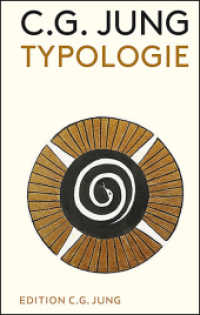- ホーム
- > 洋書
- > 英文書
- > History / World
Full Description
Between Rebels and Rulers in the Early Islamicate World offers the first dedicated examination of the phenomenon of rebellion across the early Islamicate world. It combines discourse analysis with a return to long-neglected social-historical analysis in its study of contention and the ways in which it was narrated and enacted. These approaches are pursued through fourteen case studies, ranging geographically from North Africa to Central Asia and chronologically from the sixth to tenth centuries CE. These diverse examples reveal several patterns: First, rebellion operated as a normative means of negotiating power and obtaining justice. Second, the main constituencies of rebellion were local elites, both Muslims and non-Muslims, Arabs and members of pre-conquest societies, separately or together. Accordingly, this volume challenges the 'othering' of rebels found in written sources and reflected in scholarship and reframes them and their discourses as integral parts of an imperial system. Third, social ties provided a framework for the mobilisation of rebellious constituencies and the resolution of conflict.
Contents
List of Illustrations
Abbreviations
Notes on Contributors
Acknowledgements
Map
Introduction: Approaching Rebellion in the Early Islamicate World
Hannah-Lena Hagemann and Alasdair C. Grant
I. Discourses of Rebellion
1. Islamic Scholarly Giants and (Anti-) Rebellion Ḥadīths
Marjan Asi
2. Early Ibāḍī Historiography: The Case of the Khawārij
Enki Baptiste and Adam Gaiser
II. Political Culture of Rebellion
3. The Revolt of Yaḥyā b. Zayd b. ʿAlī (d. 125/743): Bayʿa, Disobedience and Rebellion in the Early Islamic Period
Natalie Kontny-Wendt
4. Poet, Scholar, Rebel? ʿImrān b. Ḥiṭṭān (d. 703), Khārijite Revolt and the 'Playbook of Rebellion' in the Umayyad Period
Hannah-Lena Hagemann
III. Contentious Communities
5. Sectarianism and Counterinsurgency in Sixth-century Roman Mesopotamia: A Case Study in 'Ruralisation'
Walter Beers
6. Religion and Rebellion: Mobilisation through Religious Image-building - The Cases of the Zanj and Qarāmiṭa
Nimrod Hurvitz
IV. Contending the Province
7. Taxation, Rebellion and Withdrawal in Early ʿAbbāsid Armenia (136-58/754-75)
Alasdair C. Grant
8. Local Resistance and Arab Rebellion: The Conquest of Khurāsān and Transoxiana in the Context of the First and Second Fitnas
Robert Haug
V. Contending the City
9. Negotiating Rebellion: The Revolt of the Jund of Tunis (793-4)
Alon Dar
10. Changing Patterns of Rebellion in Aghlabid Ifrīqiya
Antonia Bosanquet
VI. Disputing Privilege
11. Wealth and the Image of the Umayyads in the Sermons Attributed to Abū Ḥamza (d. 748)
Andrew Marsham
12. A Generational Explanation of the Third Fitna (126-36/744-54)
Leone Pecorini Goodall
VII. Spaces of Rebellion
13. Three Kaʿbas, Three Rebellions: Rebels and Sacred Architectures in the Early Islamic World
Muhamed Riyaz Chenganakkattil
14. Infrastructures of Contention: The Zanj Rebellion (255-69/869-83)
Philip Grant
Index






